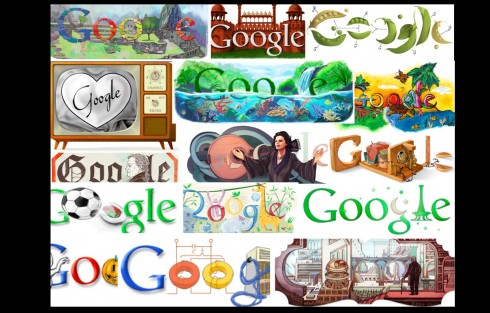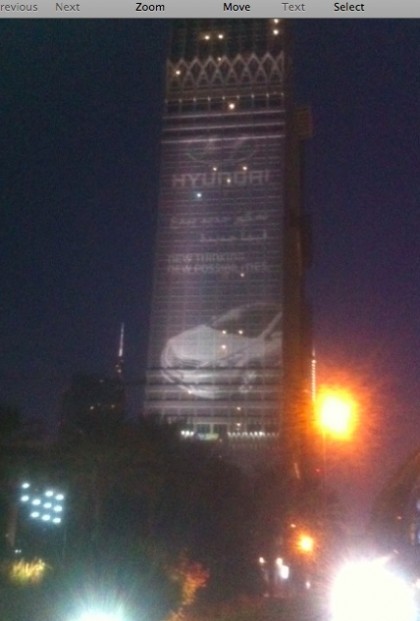Reporting from Dubai, United Arab Emirates this week
TAKEAWAY: Logos have traditionally stayed unmoved, representatives of a what a brand stands for, its history, the recognizable symbol that establishes a sense of familiarity and intimacy between user and brand. Google’s logo is an exception. It changes with the date, and it could even be different from one country to the next, yet we all recognize it, a cameleon that is always familiar. Behind each logo transformation: a story. ALSO: Preparing for the next big news event—-the Hillary October surprise?
Part of the Google fun: the mercurial logo

Watch the Google doodlers in action here
The Lucille Ball’s 100th birthday doodle: one of the best
Honoring Charlie Chaplin——and he reads a Google newspaper, of course
The Freddie Mercury 65th birthday
See all of the Google’s Doodles here:
http://www.google.com/logos/index.html
These Google logos are heavily into storytelling: just look at the logo on any given morning and you get the instant story of that which you should be thinking about that day: environment, Father’s Day, Lucille Ball’s birthday, or some patriotic moment in whatever country you happen to be that day (indeed, the storytelling is local for the Google Doodles).
I am fascinated by the surprise element, but, more so, by the fact that today, when we emphasize storytelling as the key, Google extends the thought to storytelling through its brand. Nothing ecstatic about it.
And to think—for those of us who have been in the business for decades—that brands were the most carefully guarded of all visuals.
“You can do anything to the newspaper, or the magazine, but please don’t touch the logo.”
I have heard that phrase hundreds of times—still do today! Of course, there were always adventurous editors and art directors who would place a cornucopia around the newspaper’s nameplate for Thanksgiving, or Christmas lights on Dec. 25. But, in some houses, even these occasions were a NO NO to tamper with “the brand”.
But Google tells us that respect for the visual aspects of a brand does not mean one must put it away in the attic, along with grandma’s trunk and her cameo.
For Google, it seems, the logo is organic. Like butterflies, a beautiful thing, lasts one day, disappears.
But, alas, the Google Doodles are filed and you can find them and study them.
When I taught graphic arts courses at Syracuse University, one of the early exercises was to have each student create his own logo. It was fun for them, it gave us a chance to discuss branding, and it gave me an early in the semester insight into how this student saw himself/herself.
Google provides a daily lesson on transmitting quick information and telling a story in those first 10 seconds when we look at its logo.
More on “dynamic logos”
From time to time editors ask me about preparing for that big news event that they know will happen, and so let’s get ready for it.
Traditionally, newspaper editors have prepared obituaries ahead of time for dignitaries and VIPs, knowing that their time will come. I remember, as an intern at The Miami News in 1967 working on research for the future obit of President Eisenhower (he died in 1969). The published obit had some of the material I had put together about his childhood.
In meetings the past weeks, a subject of “future” reference that comes up is what is called The Hillary Factor. Will Hillary Clinton, who now serves as Secretary of State in the Obama administration, be approached about challenging her boss in a Democratic primary to seek the Party’s nomination for the 2012 Elections? Not totally farfecthed, if you read what some political pundits are writing about.
Unbelievable as it may seem, it probably makes perfect sense, and I would not discourage any editor to start the planning of such a package.
Ads that rise into the sky

When night falls in Dubai, the skyscrapers turn into giant billboards advertising everything from perfume to airlines to cars.
I was running early evening and took a picture of one of these giant ads that span across dozens of stories.
Dubai: the metropolis that sells night and day.